|
|
|
|
|
| 1 |
 |
Page i
“...THE
CHINA MISSION
YEAR BOOK
1917
(EIGHTH ANNUAL ISSUE)
Edited by
THE CHINA CONTINUATION COMMITTEE
under The direction of
an editorial committee
Rev. D, MacGillivray, D.D., Chairman
Rev. C. Y. Cheng
Rev. F. D. Gamewell, Ph.D., LL.D.
D. E. Hoste, Esq.
Rev. E. C. Lobenstine
Rev. J. Walter Lcwrie, D.D.
Rev. G. F. Mosher
Rev. Frank Rawlinson
Rev. W. Hopfcyn Rees, D.D.
Rt. Rev. l. H. Roots, D.D.
Rev. Otto jScSMftze _
Rev. Arffrurl>i^Smith, P.D,
/v ....."..... '
/&/ s
editor
E. C. Ix>benstftfe\ V' / ,
vAV!1^ y/cv
Foreign Secretary, China ContinuattoQ i^otnqiittf^e ...''
SHANGHAI
THE CHRISTIAN LITERATURE SOCIETY FOR CHINA
19 17...”
|
|
| 2 |
 |
Page iii
“...effort, and
it is essential, to the success of the missionary movement in China that
those who>are in it, either as missionaries on the field, or as directors of
the movement abroad, should understand not only the work of their own
society and of the sections of the field in which that work is located, but
of the movement as a whole.
The articles presented in this volume were written by sixty different
persons, living in all parts of China, and connected with many different
societies. While each chapter is complete in itself, that comprehensive
view of the work of the past year as a whole, which it is the object of
this book to present, will hardly be gained except by reading the book
through.
The China Continuation Committee is responsible for the China
Mission Year Book only in that it appoints the Editorial Committee
and the Editor. When articles in the book are the expression of the policies
or the views of the China Continuation Committee, this fact is made clear;
in all other cases, the...”
|
|
| 3 |
 |
Page iv
“... Y. Y. Tsu's article on "Native Charities of Shanghai."
The Editor desires to take this- occasion of thanking most, heartily
all those who have contributed articles to this book, and the large number
of others, including the Statistical Secretaries of the Missions, without
whose painstaking work and sympathetic co-operation, the facts here
presented could not have been secured. He also acknowledges his indebt-
edness to the members of the office staff of the China Continuation
Committee, to- the Rev. M. T. Stauffer and Miss M. Yerne McNeely for
assistance in checking statistics, preparing tables and indexing the book,
and especially to the Rev. C. L. Boynton, who this year as last, in addition
to supplying the statistics and editing che Directory of Protestant Missions
in China, has seen the China Mission Year Book through the press.
E. C. Lobenstine.
July 23rd, 1917....”
|
|
| 4 |
 |
Page xv
“...ERRATA
Page 48, Year of opening Yunnan, 1881.
Foot-note, Read China Mission Year Book,
1915, Chapter VIII.
,, 98, Chihli: Missionary societies at work, 25.
,, 110, Fukien: Total Chinese workers 3077.
,, 149, Kansu: Tota missionaries, 68.
,, 216, Shantung: missionaries societies at work in the
province, 18. Total missionaries, 453. Total
Chinese workers, 2,002. Communicant members,
32,129.
,, 258, Yunnan: Communicant members, 7,413....”
|
|
| 5 |
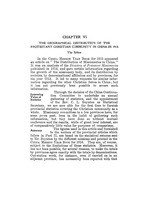 |
Page 45
“...CHAPTER VI
THE GEOGRAPHICAL DISTRIBUTION OF THE
PROTESTANT CHRISTIAN COMMUNITY IN CHINA IN X9J5
The Editor
In the Chinta Mission Year Book for 1915 appeared
an article on The Distribution of Missionaries in China.
It was an analysis of the Directory of Protestant Missionaries
published in 1914, and gave certain information regarding,
the growth of the missionary body, and its distribution by
societies, by denominational affiliation and by provinces, for
the year 1913. It led to many requests for similar inform
mation regarding the other Christian forces in China; but
it has not previously been possible to secure such
information.
Through the decision of the China Continua-
Valueof12 Committee to undertake an annual
Statistics gathering of statistics, and the appointment
of the Rev. C. L. Boynton as Statistical
Secretary, we are now able for the first time to furnish
provincial statistics covering the Christian community as a
whole. Missionary committees in a few provinces have, for
some...”
|
|
| 6 |
 |
Page 46
“...evangelistic fervour."
Few, if any, students of missions, will disagree with
liim. The Church is just at the beginning of the evangel-
ization of China. Much has already been accomplished,
but the more one studies the work remaining to be done the
more one is convinced that if the Church is ever to accom-
plish her God-given task, it will be by harbouring to the
utmost her resources and by careful and united planning.
The leaders of the missionary movement must study with
increasing care the location of every new mission station, of
every school and hospital, and of every worker. The
Church's resources, while adequate to the task, if rightly
'used, are inadequate to allow for any avoidable mistakes,
due to overlapping or to the unnecessary duplication of
institutions. The time is past when any society is justified
*In pocket at back of this book will be found a series of charts
setting forth graphically some of the data contained in these
tables....”
|
|
| 7 |
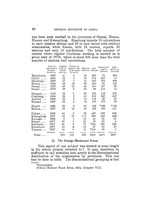 |
Page 48
“...48
GENERAL. SITUATION Itf CHINA
has been most marked in the provinces of Shansi, Honan,
Hunan and Kwangtung. Shantung reports 18 out-stations
to each mission station and 26 to each centre with resident
missionaries, while Kansu, with 16 centres, reports 20
stations and only 18 out-stations. The total number of
centres where regular Christian worship is carried on is
given here at 7078, which is about 600 more than the total
number of stations and out-stations.
Year of Centres Centres oc- n^n;-** n#7,,,.
opening to with re- citpied with- Mission Out- J '
Joreign sident in the pan stations stations Zd>nl\ v-m'hi
resideme missies 10 years gallons itoisiup
Manchuria. 1867 27 5 34 297 71 263
Chihli ............1861 33 7 53 312 237 61
Shantung .. 1860 37' 7 54 963 195 S99
Honan1884 50 18 60 269 90 156
Shansi............1876 48 13 53 180 127 80
Shensi............1876 2S 3 30 9S 113 11
Iviangsu____ 1S43 24 5 96 263 119 276
Chekiang.. 1864 29 2 47 555 397 427
Anhwei .... 1869 22 2 33 118 90 67...”
|
|
| 8 |
 |
Page 89
“...intercourse exists. It is not unlikely that the improvement
referred to is in large part due to the lessening tendency on
the part of members of the Catholic Church, as well as of
Protestants, to look to the Church or mission for help in
lawsuits or similar difficulties.
Chekiang being the first province in which
Missfonar work in the interior was extensively under-
Force *Y taken, it is not surprising that it is relatively
well supplied with missionaries. The develop-
ment in this connection during the past ten years has not
been very marked. In 1906, according to Broomhall's
Chine.Empire, the total number of missionaries was 244.
By 1911 the Rev. Alex. Miller (China Mission Year Book
1912), reported a total of 313. This increase, which amounts
to about six per cent per year, would perhaps be about that of
other sections of the country. But when we compare the
figures of 1916 with those of 1911, we find an unusual and
significant fact, namely, that the net increase in foreign
missionaries...”
|
|
| 9 |
 |
Page 90
“...is not growing as the conditions demand. This is
particularly true with reference to the better trained men.
The available statistics give for 1911 a total church
membership of 18,708 and for 1916 a total of 24,228. In
each case the figures are really for the year previous.*
*It is a rather sad commentary on our business methods that the
figures for a Mission Year Book which will be in the hands of reader*
by the middle of 1917 will, so far as this province is concerned,
contain statistics collected at dates varying from March to December
1915. The easy remedy for such a condition would be for the mission!
:to collect promptly, on the blanks prepared by the Continuation Com-
mittee, statistics terminating at a fixed date each year....”
|
|
| 10 |
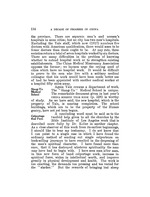 |
Page 134
“...IN" CHINA
the province. There are separate men's and women's
hospitals in some cities; but no city has two men's hospitals.
Excluding the Yale staff, which now (1917) numbers five
doctors with American qualification, there would seem to be
fewer doctors than there ought to be. At any rate, three
societies return a total of seven hospitals worked by six doctors.
There are many difficulties in the problem of knowing
whether to extend hospital work or to strengthen existing
establishments. The China Medical Missionary Association
opposes the former; we laymen urge the crying need of
cities which have no hospital work. It would be difficult
to prove to the men who live with a solitary medical
colleague that his work would have been made better use
of had he been appointed with another medical worker at
a hospital fifty miles away.
Again Yale crowns a department of work.
Medical The Siang-Ya Medical School is unique.
School remarkable document given in last year's
china mission year book (p....”
|
|
| 11 |
 |
Page 232
“...232
A decade of progress in china
works, to secure G$12,000 for additional buildings and
equipment.
A good deal of experience has been gained in the
Pingtu Industrial School under the Southern Baptist
Mission in manufacturing hardware, in canning and the
like and the result has -been sufficiently encouraging to
justify more effort in that line." The method seems to be
instilling in the minds of many students a growing whole-
some respect for manual labour, but there is great need of
additional light in regard to industrial education, in order
that it may best meet the needs of mission work.
Schools for business training are found at
ScWs Weihaiwei (forty pupils) and at Chefoo (one
c 00 s hundred and eighty pupils). In the latter
school the aim is to give a good general education, together
with book-keeping, typewriting and stenography. The
graduates are filling acceptably positions in various parts, of
China.
One of the most significant changes in the
of English educational work in Shantung...”
|
|
| 12 |
 |
Page 238
“...especially those passing through Sianfu in E. to W. direction.
Railroads, None in operation. ProposedPukow (Ku)-Sianfu.
Post Offices, 27. Postal Agencies, 170. Telegraph Stations, 7.
^Missionary Societies at work in the province, 4. §TotaI Missionaries,
117. Total Chinese Workers, 334. Communicant members, 3,825.
# The year 1907 was in Shensi one of
^Mission*0*11* ecclesiastical stock-taking. It was a time of
Work* reviewing and consolidating the past, and of
preparing for expansion. A more or less
definite stage had been reached, and the turning point was
marked by the visit from England of the Revs. W. Y.
Fullerton and C. E. Wilson, the Shensi section of whose
book New China should be consulted with regard to the
progress registered up to that point. They actually wit-
nessed the baptism of the thousandth member received into
the Baptist Church. Until 1900 entrance into cities had
been extremely difficult; the work had, therefore, been al-
most entirely in villages, with a Gospel village...”
|
|
| 13 |
 |
Page 269
“...Tsitsihar on the N., with Port Arthur and Dalny
on the S., and with Antung on the S. E. Post Offices, 147. Postal
Agencies, 317. Telegraph Stations, 132. jMissionffry Societies at
work in the province, 0. §Total Missionaries, 170. Total Chinese
workers, 926. Communicant members, 20,236.
I. **Historical Sketch
For the last thirty years mission work in Manchuria
has been punctuated at intervals of about five years by such
natural or political events as floods, famines, wars, and
*Ricliard. f Minchengpu Census, 1910. iAll Missionary Statistics,
1915. § Including wives. **Chief references to conditions and work
in Manchuria in earlier issues of the China Mission Year Book :
1911, pp. 215-222; 1914, 416-428,232-239; 1915 45-47, 253-256; 1916,
90-92, 128-129, 14M43, 244-246....”
|
|
| 14 |
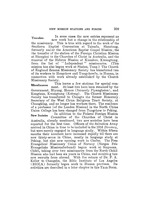 |
Page 309
“...former Honorary ,
Secretary of the West China Religious Tract Society, at
Chungking, and no longer has workers there. The residence
of a professor (of the London Mission) in the North China
Union College has been changed from Tungchow to Peking.
New Societies ac^ition to the Federal Foreign Mission
ew oceies Qornmj^ee 0f the Churches of Christ in
Australia, already mentioned, two new societies have been
reported for the first time. Officers of the Salvation Army
arrived in China in time to be included in the 1916 Directory,
but were merely engaged in language study. Within fifteen
months their numbers have increased rapidly till there are
now thirty-seven in China, mostly in language study at
Peking, but also now opening work in Chefoo. The Free
Evangelical Missionary Union of Norway (Norges Frie
Evangeliske Missionsforbund) begun work at Sinpaoan,
Chihli, taking over two missionaries from the North Chihli
Mission who had been six years in China, and receiving two
new recruits from abroad...”
|
|
| 15 |
 |
Page 389
“...our
higher education to the needs of the Chinese women. It
should contribute to raise the entire economic, social and
religious life of China. Mrs. Thurston writes, Science
work, to be vocational, needs to be treated from the point
of view of woman's needs.'' The great demand for college
graduates to teach in high schools suggests that they should
be specially trained for this, rather than in methods for
primary teaching.
*To those interested in this subject we recommend the following
articles in the Educational Review.
October, 1935, Knby Sia, B. A., "Higher Education for Girls."
October, 1914, "Christian Education of Women," Pages 17,18,
19,22-24.
April, 1916, page 95, Mrs. Thurston,'''Higher Education of Chinese
Women, Aims and Problems."
Also, in the Year Book 1913, page 303, "Woman's Education in
China", Laura M. White.
In the China Mission Year Book, 1910, page 228, "Medical
Education for Women"....”
|
|
| 16 |
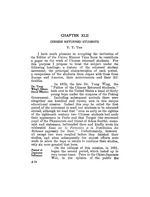 |
Page 407
“...CHAPTER XLII
CHINESE RETURNED STUDENTS
Y. T, Tsur
I have much pleasure in accepting the invitation of
the Editor of the China Mission Year Book to contribute
a paper on the work of Chinese returned students. For
this purpose I propose to treat the subject under the
following headings: a history of the returned student
movement, the priucipal characteristics of each period,
a comparison of the students from Japan with those from
Europe and America, their achievements and their dif-
ficulties.
In 1872, the late Dr. Yung Wing, the
WWs^uca- "Fatlier of the Chinese Returned Students,
tiona^Misslon took over to the United States a band of thirty
young boys under the auspices of: the Peking
Government. Including subsequent arrivals there were
altogether' one hundred and twenty men in this unique
educational mission. Indeed this may be called the first
period of the movement to send out students to be educated
abroad, although we read that even as early as the eighties
of the eighteenth century...”
|
|
| 17 |
 |
Page 436
“...conditional
loans, already amount to $15,100, besides travelling
expenses. No additional appointments have been made to
the scholarships in pharmacy and nursing since the last
Year Book was published. The appropriations for these
scholarships, eight in all, amount to $7,100. Two scholar-
ships for nurses are still vacant, as the number of women
who possess the necessary qualifications, that is, at least one
year of actual experience in nursing and a good knowledge
of English, is still very small.
Up to the end of the year 1916, appropria-
Hospitals tions had been made for the support of twenty
additional foreign doctors, twenty-three for-
eign nurses and three business managers for mission
hospitals, and a few grants had been made towards other
current expenses. Most of these appropriations have been...”
|
|
| 18 |
 |
Page 458
“...topics
touched upon during the past year have been: 14 The New
Home as illustrated by the American Home.,, 4'The
Spirit of Social Service," The American Youth," "Mon-
tessori Theories and Methods of Training Children,'' "The
Conversion to the Christian Religion of Mme. Nieh,"
daughter of Marquis Tseng.
As yet the time does not seem to have
stitucncv as arrived for the successful sale of a woman's
yct^Small s magazine. The Woman's World, published by
the Chung Hwa Book Company, was dis-
continued after a year and four months' trial. The Ladies'
Journal had four thousand regular subscribers in the
first year, and about seven thousand in the second year,
with over one thousand copies circulating in the city of
Shanghai, but when we think of the immense number of
Chinese women, roughly speaking, two hundred millions,
four thousand are but as a drop in the sea.
Since the close of The Woman's World, The Ladies*
Journal has been left as the only non-mission Chinese
magazine for women. It is like...”
|
|
| 19 |
 |
Page 460
“...460
CHRISTIAN LITERATURE
From the catalogue of the Chung Hwa Book Company I
learn that their issues last year were 232 titles and the year
before 313.
Bearing in mind that there is a vast number
GrwtLherafv Polishing houses in China, though none
Activity Cf them approach the two firms named in the
magnitude of their operations, we note as an
indubitable fact that this is a period of great literary
activity. In all China's history there never was a time
when so many books were being printed or so much reading
indulged in by the people. We turn now to inquire what
this multitude of books is written about; what kind of
pabulum is the nation feeding its intellect on?
First, then, two-thirds of the titles are
o^Schoo?Books scho1 They are good school books, too,
and are used in every mission school, so need
not be further described. But one is compelled to pay a
tribute to the eagerness with which the Chinese people seek
for education. Attendance is voluntary, and fees are high,
relative to the...”
|
|
| 20 |
 |
Page 473
“...first year on the field, and a study of the
whole question as to what part of their preparation can
best be obtained at home.
Technical matters related to educational or medical
missionary work do not come within the purview of this
Committee; these belong naturally to the China Christian
Educational Association and the China Medical Missionary
Association, and other organizations with which the China
Continuation Committee is in closest co-operation.
From this brief review it will be seen that the Com-
mittee is at least succeeding in keeping before not only its
own members, but also a larger constituency, questions
which have a vital bearing upon the future of the Christian
movement in China. Copies of its Proceedings were sent
last year to every missionary family in China, and steps
are being taken to reach a larger proportion of the Chinese
Christian leaders. One mission places a copy of the
China Church Year Book in the hands of every one of its
Chinese staff, and is convinced that...”
|
|
|